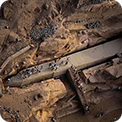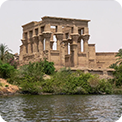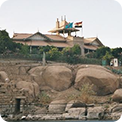Top Tourist Attractions in Aswan

Aswan is characterized by the natural richness in the Egyptian city, Aswan is full of ancient Pharaonic civilization and many tourist destinations including Pharaonic, Islamic and Nubian

The Unfinished obelisk
Hatshepsut ordered the Fifth Pharaoh of the Eighteenth Dynasty in Egypt to build this obelisk. The unfinished obelisk is located in the northern area of the ancient stone quarries in Aswan and is the largest ancient obelisk in Aswan. It is greater than a third of the ancient Egyptian obelisk. If it had been completed, it would have measured about 42 meters and would have weighed 1090 mt.

The Nubian Museum
This building was opened in 1997 and it consists of floors for display, housing, a library, and an information center. The artifacts are the one that distinguishes and occupies the largest part of it, which reflects the stages of the development of culture and civilization. The Nubian International Museum was dedicated to participating in Nubian civilization and culture, and the Aga Award for Architecture was awarded in the year 2001.

Elephantine
Elephantine is an island on the Nile, which forms part of the city of Aswan, and is characterized by attractive and different archaeological sites. It is further distinguished by its location where it is located downstream of the first waterfall on the side sides of Egypt with the lower Nubian, and this area is known as Upper Egypt, where it is located on the top of the Nile. One of the most important reasons for naming the island is its elephant tusk shape and round rocks along the Nile takes the shape of the elephant.

Aswan Museum
The Aswan Museum is located in Elephantine on the southeastern side of Aswan, it was opened in 1912. The museum contains the greatest relics in Nubi that exist during the construction of the Aswan Dam. A new section has been opened showing the relics discovered on Elephantine Island itself, such as utensils, weapons, pottery, and mummies.

Philae
Philae is an island in the reservoir of the Aswan Dam, at the end of the Aswan Dam and Lake Nasser, Egypt. Philae was originally located near the first waterfall extending the Nile in Upper Egypt and was the site of an Egyptian temple complex. Its name means Border by the ancient Egyptian." As their southern border, the Egyptian pharaohs kept there a strong garrison, and it was also a barracks for Greek and Roman soldiers in their turn. The structure of the first temple, which was built by the original Pharaohs of the Thirtieth Dynasty, was the temple of Hathor, a major deity in ancient Egyptian religion.

Mausoleum of Aga Khan
A tomb was built for the Aga Khan III Sir Sultan Muhammad Shah who died in 1957. It was built in the style of Fatimid tombs in Cairo, where the Fatimid era was the center of power for Egypt previously and is located in Aswan along the Egyptian Nile.

Kom Ombo Temple
The Temple of Kom Ombo is an unusual double temple in the town of Kom Ombo in Aswan Governorate, Upper Egypt. It was constructed during the Ptolemaic dynasty, 180–47 BC. In the Roman period, this Temple was updated and some amendments were added.





























































